The Adams administration has touted Safe Havens as an alternative for those who would rather sleep outside than in a traditional homeless shelter. But there are too few of the facilities to accommodate the majority of unsheltered New Yorkers.
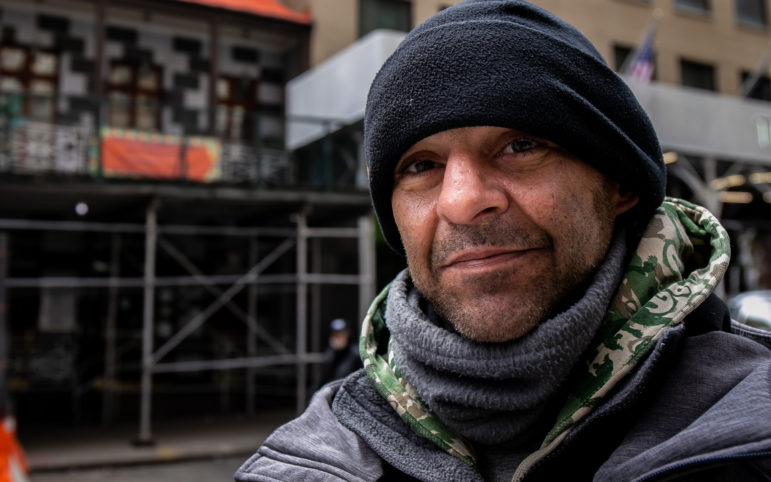
Adi Talwar
Michael Torres on a recent Tuesday afternoon near the Mainchance Drop-In Center on 32nd Street in Manhattan. Torres has been homeless since the summer of 2020.Lea la versión en español aquí.
After more than a year sleeping in parked cars and city parks, Michael Torres got a chance to try something new earlier this month.
When a bed opened up in a Safe Haven shelter near Crotona Park, Torres, 45, received a referral from an outreach team and moved into a room he shares with one other person.
Safe Havens have fewer restrictions than most facilities in the city’s sprawling shelter system and allow people to come and go as they please. Along with similar so-called stabilization shelters, they are designed to appeal to homeless New Yorkers, like Torres, who have left or avoided other congregate facilities—typically due to autonomy, privacy or safety considerations—and have instead opted to bed down in public spaces. The arrangement is not perfect—Torres says he really wants a permanent apartment—but the flexibility is working for him.
“I don’t need a curfew,” Torres said outside a Manhattan drop-in center Tuesday. “I just need to eat a bowl of oatmeal and go out looking for work.”
The specialized shelters also feature on-site services and, ideally, a pathway to housing via case managers and social workers who assist residents with rental subsidy or supportive housing applications.
But there are too few of the facilities to accommodate the majority of unsheltered New Yorkers. That means outreach workers can rarely offer placement to people in need, even as police, under the direction of Mayor Eric Adams, drive them off the trains and sanitation workers throw their belongings into garbage trucks. Adams, who came into office pledging to evict homeless New Yorkers from the subway system, said last Friday that he also plans to order the removal of every homeless encampment in the city, stepping up a practice that his predecessor Bill de Blasio accelerated at the tail end of his tenure.
The city’s Department of Homeless Services (DHS) had 1,533 Safe Haven beds as of last week, according to data provided by the Coalition for the Homeless. (DHS and the Mayor’s Office did not provide a response when asked how many beds the city has). Nearly 90 percent of those beds are filled each night, according to daily data tracked by City Limits. There are also 990 stabilization beds, the Coalition said. The city’s most recent street homeless census counted 2,376 people staying in public spaces, a figure advocates say is a significant undercount.
But more Safe Haven beds are set to open in the near future, Adams announced Tuesday at a ribbon-cutting for a new 80-bed shelter near Lincoln Hospital in The Bronx. The facility features an on-site health clinic and will be run by the organization Care For the Homeless (CFH).
“This facility is an indicator of what’s possible. It’s a safe space with wraparound services,” Adams said. “You can’t get this on the A train overnight. You can’t get this sleeping in Times Square. You can’t get this sleeping in a cardboard box.”
Adams said 350 of a planned 490 Safe Haven and stabilization beds will open this week, though the organizations running the sites are still getting up to speed. During a tour of the facility Tuesday, CFH President and CEO George Nashak told reporters that he expects about five people will begin staying in the shelter this week while the organization trains new staff members and awaits state certification. He estimated that the Safe Haven will be full by late spring and said CFH hopes to give priority to people sleeping in and around Lincoln Hospital. Hundreds of unsheltered New Yorkers find refuge in hospital emergency rooms each night.
The CFH shelter also illustrates the various forms the Safe Haven facilities can take. Unlike the semi-private room where Torres is staying, the new site features dormitory-style rooms with 12 to 14 beds arranged in pairs and separated by partitions. Photos of the set-up prompted criticism from advocates who said the Safe Haven mirrored conditions in most other shelters and may alienate the very people they are meant for. “People deserve privacy and safety,” advocates from the Urban Justice Center’s Safety Net Project tweeted Tuesday.
“There are thousands of empty hotel rooms,” they added, furthering a call to provide more desirable accommodations for people coming off the streets.

One of the dormitories at an 80-bed Safe Haven shelter for street homeless New Yorkers. The Safe Haven shelter is located across the street from Lincoln Hospital in The Bronx. 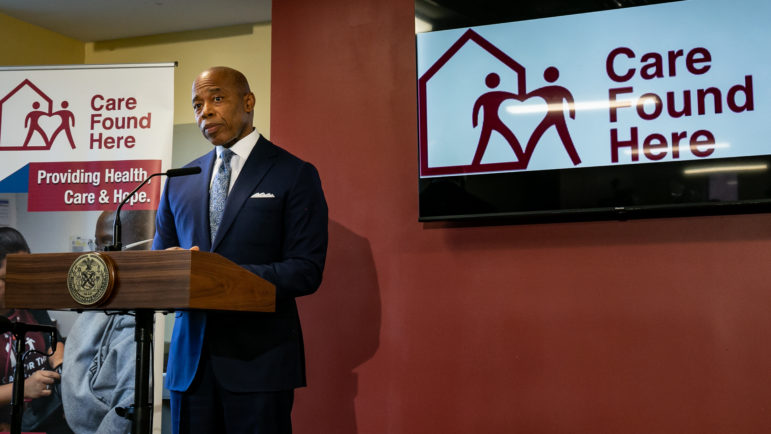
Mayor Eric Adams addressing attendees at a ribbon-cutting of an 80-bed Safe Haven shelter for street homeless New Yorkers. 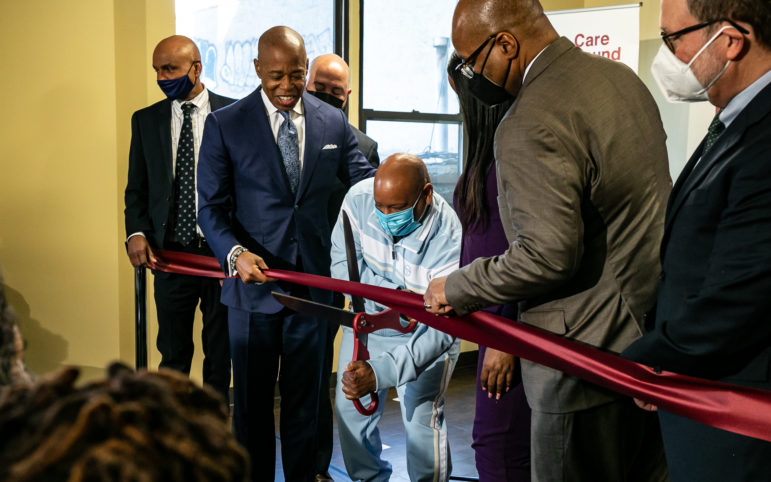
Advocate Shams DaBaron cuts the ribbon at the opening of the Care For the Homeless facility in The Bronx. 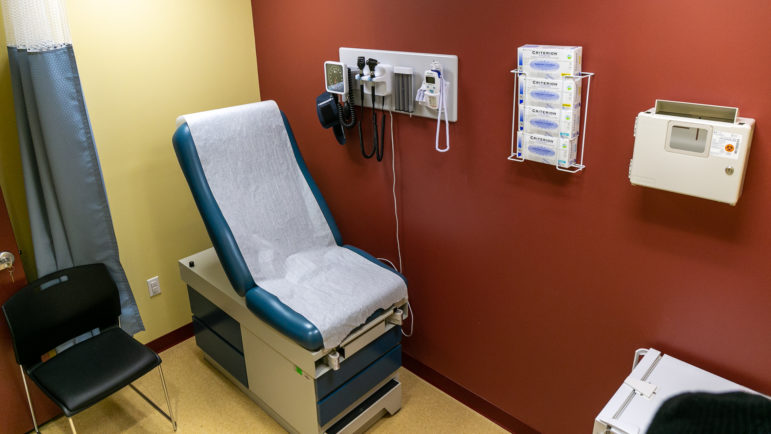
The facility’s medical exam room. 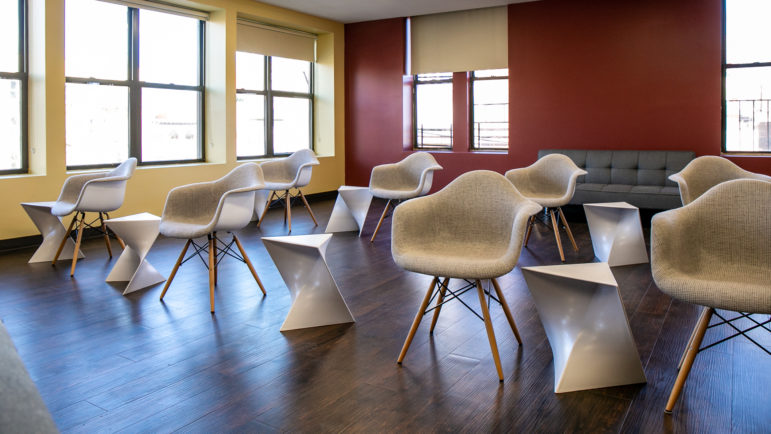
The recreation room 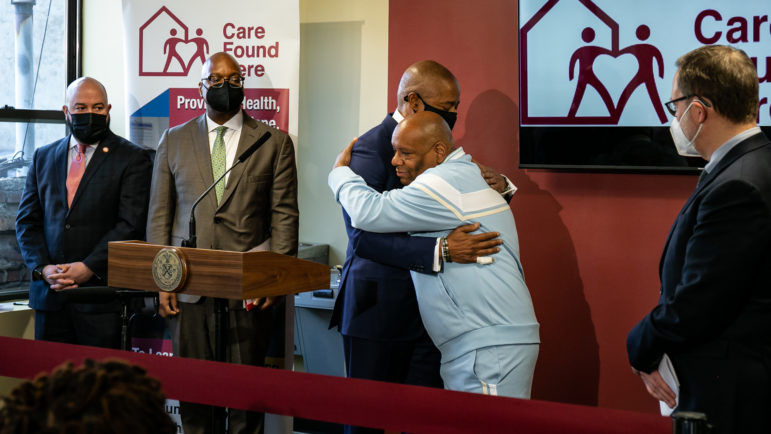
Shams DaBaron hugging Mayor Adams. 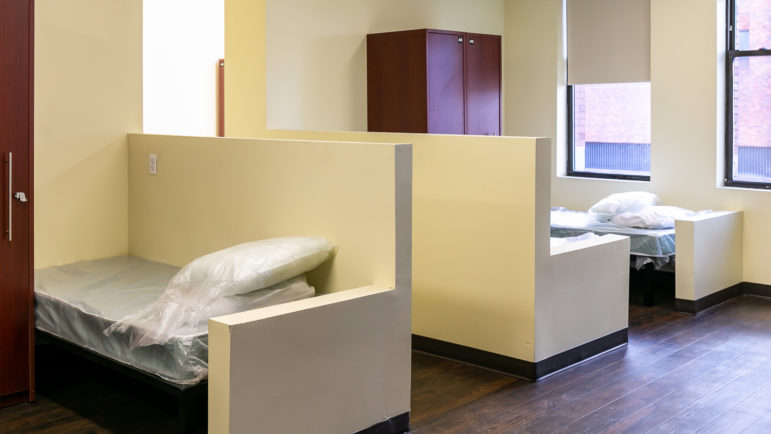
But Nashak said the more flexible rules and the ability to bypass a notorious intake process will appeal to people who have avoided the main DHS shelter system. “Our primary job is to create a better option [than the streets],” he said.
The new site, along with another Care For the Homeless facility on East Broadway in Chinatown, have been in the works for years, with the city first pursuing a Safe Haven expansion to address street homelessness in 2019.
CFH received a contract to open the shelter in October 2020, a full 15 months before the ribbon-cutting. While the facility faced some resistance from the community—a hallmark of shelter siting in New York City—Nashak said COVID, not NIMBYism, delayed the opening.
Local Councilmember Rafael Salamanca described that reticence Tuesday, but said he was won over. “I had doubts. I had concerns, but when I came here, they showed me their operation and showed me this wasn’t just a regular homeless shelter,” Salamanca said.
Communities elsewhere in the city seem to need that same convincing. The CFH Safe Haven in Chinatown has encountered fierce backlash from neighborhood groups, with the opposition increasing following the murder of creative producer Christina Yuna Lee, allegedly by a man experiencing homelessness. The area was also the site of a 2019 killing spree by a man who targeted street homeless New Yorkers, prompting calls for better shelters in the first place.
Adams said he would override community opposition in order to streamline new Safe Haven beds, but he did not provide specifics.
“Number one, 8.8 million people, 30 million opinions, but one mayor,” Adams said. “I’m the mayor and I’m going to put places where I need them and everyone is going to share the housing crisis.”
He also focused on criticism that his homeless clearance policies have been heavy on policing and light on social services. From Feb. 21 to March 20, police made 719 arrests and issued more than 6,800 summonses in the subway system. During that same period, outreach workers managed to make 312 shelter placements while making around 650 contacts per day. On Monday, outreach workers placed 14 people into shelter, according to DHS’ daily census.
“I’m not going to be distracted,” Adams said. “We know we’re on the right path. People can be critical.”
“We’ve normalized this dysfunctional city,” he added. “We’ve normalized people living on the street in cardboard boxes.”
At a press conference Wednesday, Adams said city workers visited 244 encampments between March 18 and 30 and cleared 239 of them. Only five people at those encampments went into a shelter, he said.
His plan so far has earned an influential validator: Shams DaBaron, an advocate who experienced homelessness and goes by the name Da Homeless Hero, attended the ribbon-cutting ceremony to praise SafeHavens and to bolster Adams’ approach to homeless outreach and enforcement.
“This is a facility that I’ve been begging for. I’ve been wanting this,” said DaBaron, who used to live nearby. “These are people and I don’t want to see them in the streets, on the subways or in no damn encampment. I’m not fighting for that. I’m fighting to get people housed, and if it starts with a Safe Haven let’s make it happen.”
Back at the Manhattan drop-in center where Torres stopped by for lunch, news about the new Safe Havens was met with cautious approval from unsheltered New Yorkers—at least among those who knew what they were.
Three of five people who spoke with City Limits said they had never heard the terms Safe Haven or stabilization beds, let alone been offered placement by an outreach worker. After hearing a brief description, a woman named Sharlene said she would be interested in moving in if given a chance.
“I’d think about doing that,” she said. Sharlene said she has been sleeping overnight on a plastic cafeteria chair at the drop-in center and had her IDs and phone stolen after dozing off at a subway station last week.
Across the table, another man, Angel Rodriguez, asked for more details so he could question the outreach workers he encounters at Port Authority or Penn Station. “I’ve never heard of it,” he said. “I need to talk to them about that.”
At another press conference on Wednesday, Adams showed reporters brochures meant to bridge that information gap. The forms contain information about various shelter options, which he said outreach workers will distribute as they make their rounds. “We are engaged in a multi-agency mission to get people the help they need and keep our public spaces clean,” the mayor added.
Torres, the man who moved into a Bronx Safe Haven earlier this month, said he is willing to remain at the site, though his roommate keeps late hours and exhibits signs of mental illness that disturb him.
He said he became homeless when he lost his job as a mechanic and could no longer afford his $180-a-week room in Bedford Stuyvesant in 2020. At the time, he began staying in a car left behind by a former customer until someone “torched it,” he said.
He proceeded to check in to the men’s intake facility on 30th Street and was assigned to a shelter on Wards Island, he said. But he asked for a transfer off the isolated island and was placed in the massive armory at Bedford and Atlantic, where he spent six months before opting to leave. He said he saw no path to housing there and did not like sharing a room with several people.
With the Safe Haven as a temporary homebase, he said he thinks he can land a job and make some money to put toward rent.
“I’m almost where I need to be, little by little,” he said.


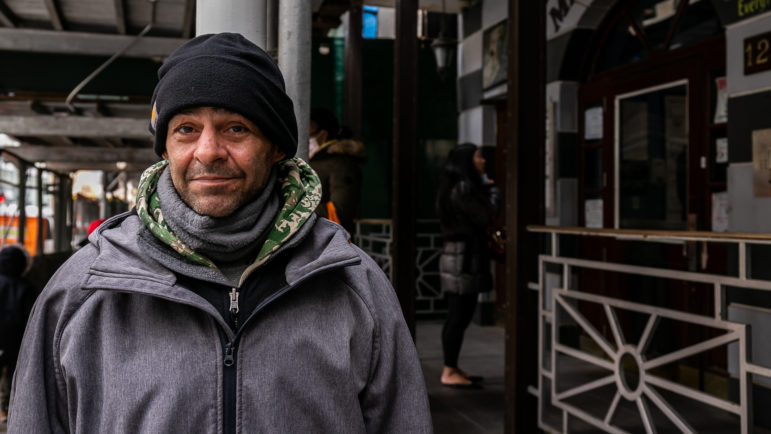
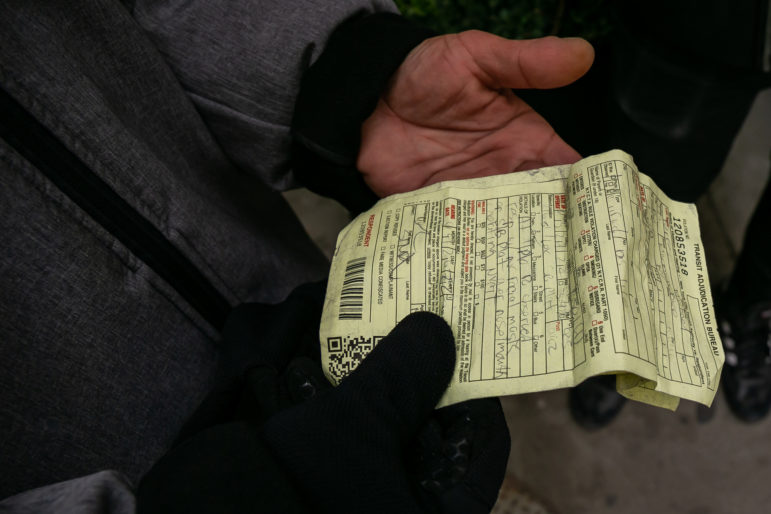
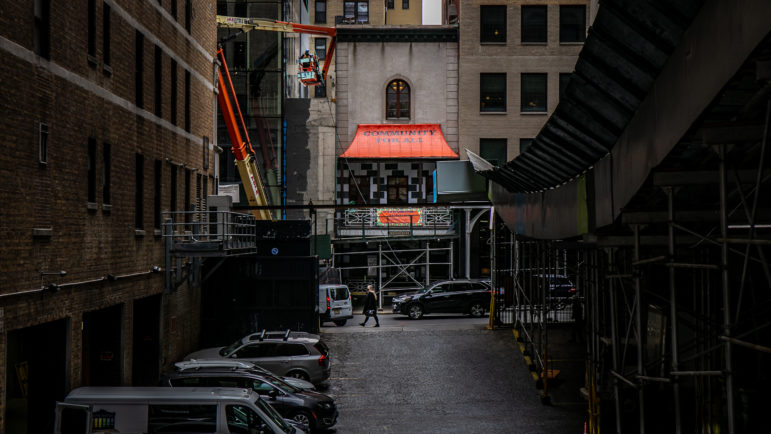







One thought on “The City is Pushing Homeless New Yorkers Off the Streets and Subways. Where Will They Go?”
I’m curious. What happened to the plan called Thrive that the former mayor’s wife developed for folks with mental illness? I believe the plan called for the police to make referrals or actually take folks who were deemed emotionally disturbed to specially designed facilities instead of jailing them or shooting them. Why isn’t Adams using those 2 facilities to house mentally ill homeless folks? Not that all homeless folks are mentally ill but for the folks that are, why not use these 2 facilities? I understand we taxpayers spent millions to build them but the beds are essentially empty.